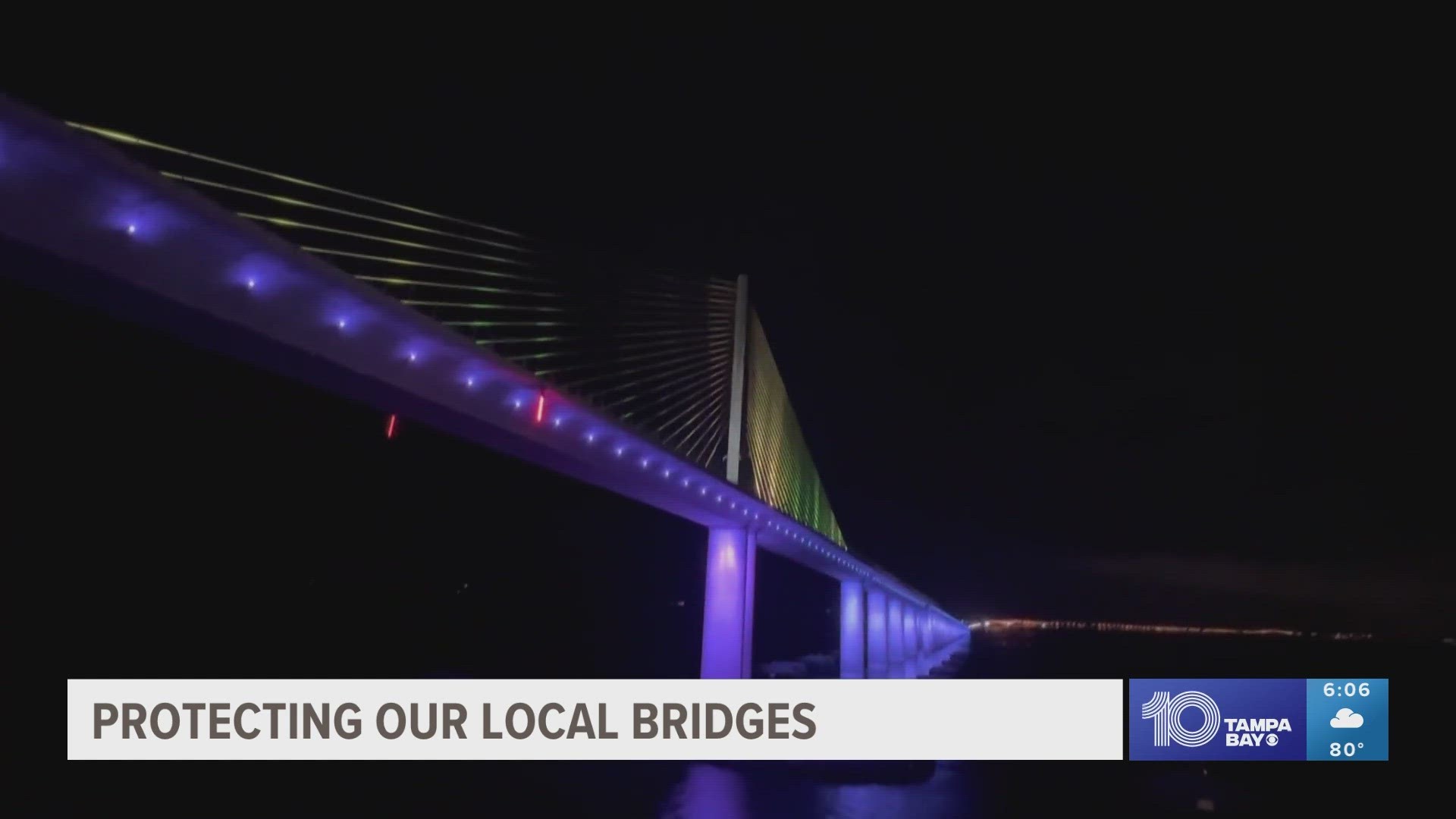TAMPA, Fla. — Baltimore’s Francis Scott Key Bridge collapse early Tuesday morning was an eerie reminder of the deadly 1980 Sunshine Skyway Bridge disaster in Tampa Bay.
Since that tragic day nearly 44 years ago, the primary goal in rebuilding and maintaining the bridge has been safety.
It’s an ongoing effort that utilizes not just physical barriers but also first-of-its-kind technology.
“The first thing that went in my mind when I saw the stories this morning was that the Skyway Bridge disaster all over,” USF Marine’s Mark Luther said.
When it comes to safeguarding the Skyway Bridge, Luther is the guy that just about everyone turns to for expertise and guidance.
“Most of the time, yeah, I’m at the top of the list,” he said.
Luther says dozens of concrete barriers called dolphins, which protect the bridge from collision, are just the beginning of an ongoing effort that carries on the goal of those who rebuilt the bridge four decades ago.
“That was one of their prime goals was to make sure that this bridge would be as difficult to knock down as they could possibly make it with the technology of the day,” Luther said. “And the technology hasn’t changed that much.”
That technology is the protection you don’t see.
The PORTS system is a series of buoys and monitors relaying information to ships before they approach the bridge.
“Right now, there are 15 sites with 36 individual sensors total. Again, measuring wind, waves, currents, tide, fog, air, gap, and it comes in every six minutes by satellite and cellular modem and line of sight radio,” Luther explained.
Today's Skyway has a long list of firsts that other bridges now use as safeguards. And that, Luther says, makes it one of the most protected, resilient spans in the world.
"And so, it would be extremely difficult for a vessel to wander far enough out of the channel that it could knock one or any of those main supports down,” he said. “I don’t like to say it’s impossible, but it’s extremely unlikely.”

